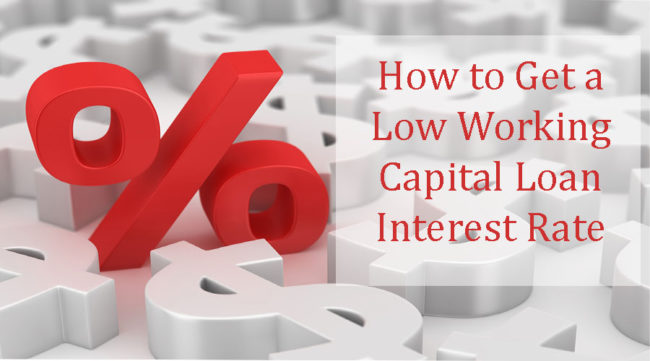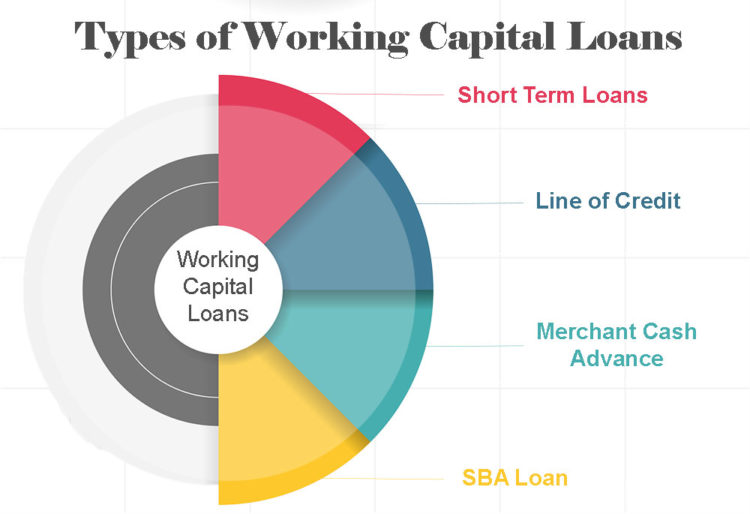
Working capital is essential to an operating business, as it allows for the day-to-day expenditures and purchases required to keep inventory on shelves, employees paid, and business flowing.
It's very common for businesses of all sizes to get working capital loans to manage these expenses, and for that reason there is a want to get these loans on the very best terms and in the best lenders.
What is Capital?
Working capital, also referred to as net capital (NWC), may be the difference between a company's assets (cash, accounts receivable, inventories) and liabilities (accounts payable). Essentially, this means that working capital is the company's liquidity–the opportunity to spend money when they have to.
It's a stride of liquidity, operational efficiency, and short-term financial health. Having good access to substantial capital means that a business can invest and grow, because it means you can put money in to the short-term necessities.
The formula for locating capital is to go ahead and take current assets (property, inventory, cash) and subtract the present liabilities (wages, rent, utilities, taxes) that will leave you with capital, made up of cash, short-term debt, inventory, and operating expenses.

The Securities and Exchange Commission defines capital as “Working capital may be the money leftover if your company paid its current liabilities (that's, its debts due within one-year from the date of the balance sheet) from the current assets.”
What is a Working Capital Loan?
Given the information above, you might think that the healthy business should never require a capital loan. In the end, as long as you have more money entering the company than leaving it, then you've a positive working capital, right? That's not forever the situation.
While you need to have some money in reserve, the inability to invest in prime opportunities could leave you at a disadvantage. You can lose out in valuable deals due to a lack of liquidity.
And what happens when an investment goes poorly and leaves you strapped for cash? Or what about whenever your jobs are seasonal and you're simply expecting a sizable influx of cash within the near future–however, you have to invest in inventory now, before you have access to that money?
That's in which a capital loan is available in. When cash is tight, but opportunities promote themselves, a functional capital loan will help you pay the bills to achieve those elusive investments. Additionally, it provides you with a chance to get caught up through sales and invoices.
A working capital loan is a kind of business loan that will help whenever your business is looking for a quick injection of money, for reasons uknown. This isn't used for long-term investments–there are other loans for that–but for short-term financial goals.
Working Capital Ratio
A good way to look at it is the Capital Ratio, the formula of which is:
Current assets / current liabilities = Working Capital Ratio

So if you have assets worth $100,000 and liabilities totaling $20,000, your capital ratio is 5:1. It's generally accepted that you should possess a capital ratio of 2:1.
Working Capital Loans
Cash flow is one of the most stressful areas of running a small business. For each small business that fails in the first year, they say income was the reason.
Working capital loans can be only the thing needed to keep a small business afloat and running through bumpy patches, seasonal unexpectancies, and emergency downturns.
These loans aren't intended to be permanent fixes–they're a short-term solution to a short-term problem–but they are very effective at solving short term liquidity issues.
Types of Capital Loans

Working Capital Short Term Loans
These short-term loans, meant to cover a business's daily expenses, may have shorter payback periods. Sometimes called Cash-Flow Loans, these will often have to be repaid towards the lender within a year or less.
These are meant to pay for short-term expenses like inventory and wages, not longer-term concerns like equipment and property.
Working Capital Line of Credit
A line of credit loan is similar to credit cards, in that you've got a borrowing limit set by the lender, and you can borrow against that limit as you need to. The difference is that, instead of being held on a charge card, the money is defined to your bank account as cash. These types of loans are extremely fashionable as to be considered standard for just about any small business.
Merchant Cash Advances
A merchant cash advance isn't exactly a loan, but instead it is an agreement with a lender that they will provide you with a lump of cash and can then extract a portion of any credit card payments your company receives. Rather than being paid monthly or annually, the lending company takes the cash daily out of your charge card income.
The benefit to a merchant cash advance is that it is quick to become approved and also to receive funding, however the downside is the terms are very unfavorable and often predatory. The annual percentage rate on a merchant cash advance is often as much as 200%.
SBA Loans
Small Business Administration loans are usually considered among the best loans to obtain, as far as terms, but they're harder to be eligible for a and wish additional time to fund. An SBA loan is guaranteed through the SBA, so it's less risky for that lenders, meaning the interest rates is going to be lower.
Qualifying is harder, however, particularly since you require a good credit rating, both personally and for your business, and also you need to meet certain criteria in regards to amount of time in business and income. The process of approval and funding might take two to three months.
How Will i Get a Low Capital Interest Rate?
Getting a low interest rate on the working capital loan is absolutely possible, but you have to look out for many traps and pitfalls. Some loans may entice you in because of their quick turnaround and approval and funding process, but they've got inadequate terms. Other loans are much slower to finance but have much better terms. Choosing the right balance is really a decision that must be left your decision as the business proprietor, but it can make all the difference to your company.
If your problem is primarily with getting the welfare rate, you'll want to stay far away from a Merchant Cash Advance. These financing options are temporary stop-gaps at best, and may sink your business when you get in too deep–requiring you to remove loan after loan to pay the eye of the last loan, and getting sucked into a spiral of debt. This isn't to say they do not have their place, but be skeptical.
The best interest rates for any capital loan can come from an SBA loan, as these are guaranteed through the Small Business Administration, and the lender is taking less risk upon themselves. The terms can be quite favorable. The downside for this loan would be that the qualification process is much more difficult, rigorous, and time-consuming. You need to submit more documentation, including financial records such as profit-and-loss statements, balance sheets, and credit ratings. And funding may not show up for months. If you are looking for solving an emergency, an SBA loan might be unfeasible.
Perhaps the best middle-of-the-road loan may be the credit line, because it is a typical, non-predatory loan that's very commonplace in the market and trusted. As long as it's not abused (everyone knows the danger of overspending on a line of credit) it can have good terms and be accustomed to cope with both present and future financial problems.
A final loan that could promise low interest rate may be the Invoice Financing loan, that you present to your lender your accounts receivable and show the invoices that are going to get paid for you, and they loan you the amount of money you're likely to receive–with the payments going right to the lender when they're paid. These have low interest, but could only be used in specific circumstances.
Small Business Funding — Capital Advances
Small Business Funding provides a choice of capital funding options, including the Working Capital Advance. It can be approved in Twenty four hours, and funded in two to 3 days. The requirements aren't as stringent as an SBA loan, as you only need to have been in business for six months and also have a the least $180,000 in annual revenue. You may be approved for up to $500,000, and the terms is determined by the amount you borrow, and the number of your revenue.

